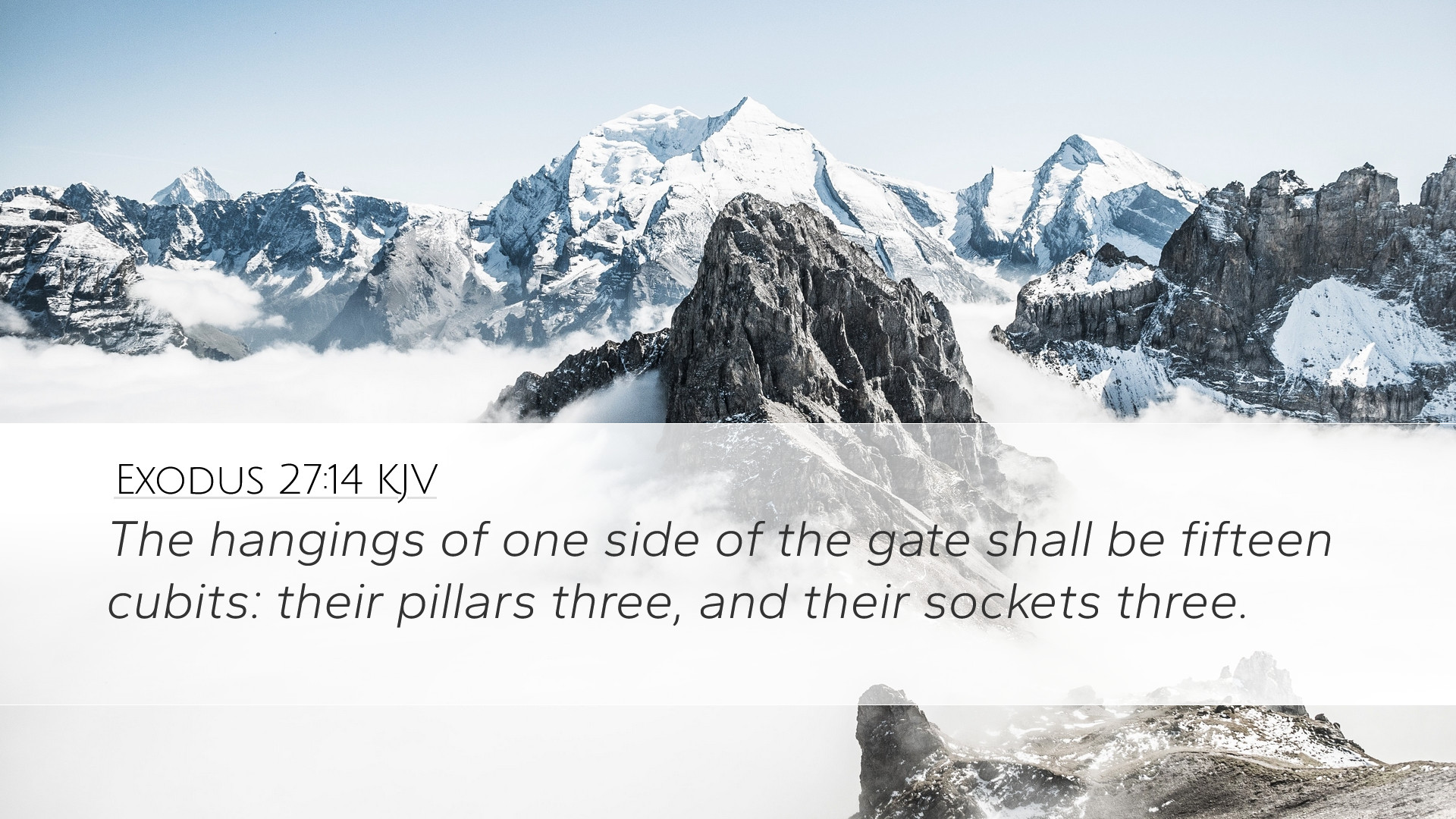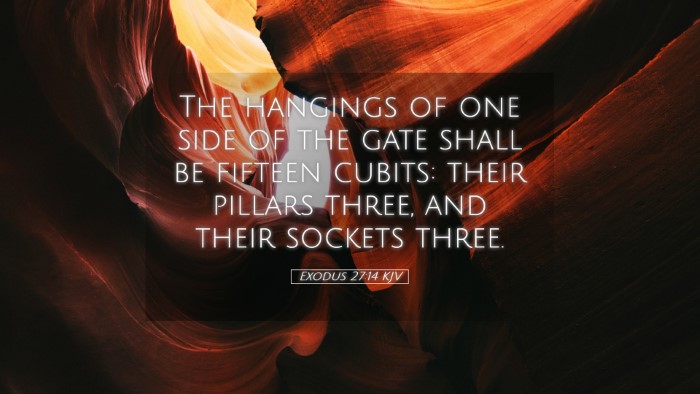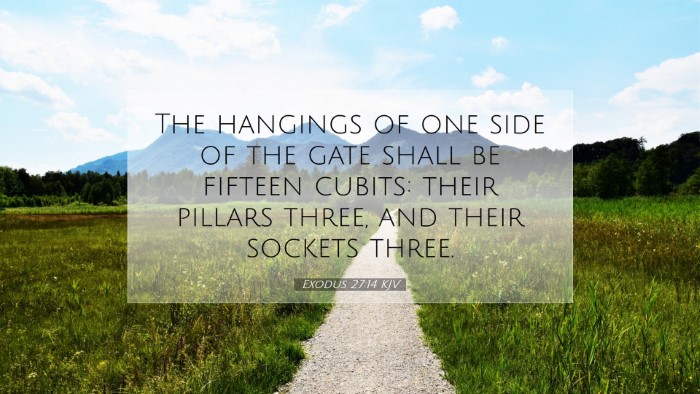Exodus 27:14 Commentary
Verse: "The hangings of one side of the gate shall be fifteen cubits: their pillars three, and their sockets three."
Introduction
This verse is part of the instructions God gave to Moses regarding the construction of the Tabernacle and its furnishings. Here, the focus shifts to the design and dimensions of the outer gate, emphasizing the sacredness and specific measurements demanded in worship and approach to God.
Interpretive Insights
Each aspect of the Tabernacle's design serves a significant theological purpose. The outer gates represented the accessibility of God to His people, while simultaneously establishing boundaries that denote holiness.
Symbolism of the Gate
Matthew Henry: Henry describes the gate as a point of entry that symbolizes how believers approach God. The fifteen cubits of hangings signify both a protection and a separation, underscoring the holiness of the Tabernacle. The measurements denote a careful planning that reflects divine order.
The Importance of Dimensions
Albert Barnes: Barnes emphasizes the precise measurements given by God, observing that they are intentional and not arbitrary. The dimensions serve to remind the people of God's majesty and the importance of reverence in their approach to Him. The three pillars and sockets signify stability and support, reinforcing the idea that worship must be founded on solid ground.
The Three Pillars
Adam Clarke: Clarke focuses on the number three, noting its frequent occurrence in Scripture, often representing completeness and divine presence. The three pillars can be interpreted as a representation of the Trinity, a reflection of divine order, and the necessity for believers to be grounded in their faith.
Historical Context
The Gate of the Tabernacle served as a threshold between the outer court, accessible to the Israelites, and the inner sanctuary, reserved for the priests. This design illustrates both intimacy and separation in the relationship believers maintain with God.
Access to God
There is a Chasm, represented by the hangings at the gate, between the holy and the common. This is not unlike the situation in the New Testament, where Christ’s sacrifice has torn the veil, granting believers direct access to God.
Architectural Significance
The detailed measurements point to the authenticity and seriousness of the construction of sacred spaces. God’s desire is an ordered worship, which the Israelites are to construct in accordance with His commands—an eternal lesson in the significance of divine instructions.
Theological Implications
The meticulous details concerning the structure allude to deeper spiritual truths that emphasize God's holiness and the human response in worship.
Holiness and Accessibility
The gate serves as a reminder that while God is holy and set apart, He is also accessible to those who seek Him in the prescribed manner. The contrasting dimensions illustrate that God desires a relationship with humanity, but also acknowledges the need for reverence and decorum.
Lessons for Worship
- Reverence: Worship must be approached with a profound sense of reverence.
- Order: God is a God of order, and worship must reflect that.
- Access through Christ: Jesus, in the New Covenant, becomes our gate, granting an open invitation to all believers.
Conclusion
Exodus 27:14 highlights the importance of structure and dedication in the worship of God. This gateway serves as a rich metaphor for both access and separation, inviting theological reflection on how the modern believer approaches God in worship. By understanding the significance of the physical structures ordained by God, one can better appreciate the spiritual realities that they represent, culminating in the ultimate access to the Father through Jesus Christ.


